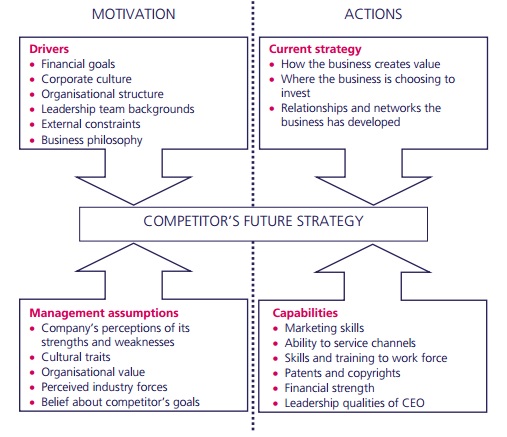Organisations strategic issues are commonly analysed from different strategy lenses. Strategic lenses are a concept of strategic management. The lenses are different ways of viewing strategy development. It examines the flow of tasks and information, or how you get things done. Each lens reveals many different traits and qualities. Using the strategic lens, one looks to optimize workflow to meet the goals and objectives of the company. This article a will cover four angles from which strategy can be viewed and implemented on a corporate level; they are strategy as design, strategy as experience, strategy as ideas and strategy as discourse. 1. Strategy as a Design This takes the view that strategy development can be a local process in which the forces and constraints on the organisation are weighted carefully through analytic and evaluative techniques to establish clear strategy direction. This creates conditions in which carefully planned strategy implementation shouldContinue reading
Strategic Management Terms
Institution-Based View of Business Strategy
An industry-based view, illustrated by Porter (1980), decides firm strategy and performance. Sustainable competitive advantages can be discovered by industry analysis and by selecting from the generic strategies. The competitive strength and the firm’s ability can maintain positional advantages through the efficient and effective implementation of competitive strategy. Secondly, a resource-based view (RBV), was demonstrated by Barney (1991), advocates that firm-specific differences determine strategy and performance. RBV emphases internal resources and capabilities of organisations. RBV portraits companies as idiosyncratic bundles of resources and capabilities that are available for distribution by the organization’s business units. Heterogeneity in the resources and capabilities is the reason of variations in organization performance. Sustainable competitive advantage is not the result of correct position in the external environment but is derived from the organization’s internal resources, which are valuable, inimitable, rare, and nonsubstitutable. Industry-based view and resource-based view are complementary because they settle the relationship betweenContinue reading
Organizational Downsizing – Definition and Reasons
Organizational downsizing is the conscious use of permanent personnel reductions in an attempt to improve efficiency and/or effectiveness. Downsizing is being regarded by management as one of the preferred routes to turning around declining organizations, cutting cost and improving organizational performance most often as a cost-cutting measure. Main Reasons for Organizational Downsizing Corporate downsizing has been the biggest fallout of the troubled times, the world is witnessing. As we continue our efforts to fight the global downturn, downsizing has become a stark reality. There are a number of reasons why a company downsizes its employee base. Merging of two or more firms: When a certain firm combines its operations with another firm and operates as a single entity, in order to stay in profit or expand the market reach, it is called a merger. In case of a merger, certain positions become redundant. The same work is done by twoContinue reading
Value Stream Mapping (VSM)
Value stream mapping is a framework that could be used by the line-managers to identify the types of wastages in a value chain. The goal of value stream mapping is to identify, demonstrate and decrease the waste. Value stream mapping identifies the non value adding activities in a process and eliminates wastage due to non-value adding activities. It focuses on visual maps the flow of materials and information from the time products come in the back door as a raw material through all manufacturing raw materials. In this frame work, the line-manager could be able to track the process flow and value addition to the product in every activity. Whenever a non value adding activity is identified then it is called as waste. 1. Value stream mapping to identify the type of wastage Value-adding steps are drawn across the center of the map and the non-value-adding steps be represented inContinue reading
Porter’s Value Chain
The term ‘Value Chain’ was used by Michael Porter in his book “Competitive Advantage: Creating and Sustaining superior Performance” (1985). The value chain analysis describes the activities the organization performs and links them to the organizations competitive situation. Value chain analysis describes the activities within and around an organization, and relates them to an analysis of the competitive strength of the organization. Therefore, it evaluates which value every particular activity adds to the organizations products or services. This idea was build upon the insight that an organization is more than a random compilation of machinery, equipment, people and money. Only if these things are arranged into systems and systematic activates it will turn’s possible to manufacture something for which customers are willing to pay a price. Porter argues that the capability to perform particular activities and to manage the linkages between these activities is a source of competitive advantage. PorterContinue reading
Michael Porter’s Four Corners Model
Profiling a specific competitor is often important to management. However, many competitive profiles will fail to give management insights into how competitors will respond to your own strategy. Understanding this inter-relationship is important for knowing how to position your company in relation to the competition. One of the most popular models for this type of competitor analysis is the so-called Four Corners Analysis. The Four Corners Analysis developed by Harvard Business School professor and strategy guru Michael Porter is a model well designed to help company strategists assess a competitor’s intent and objectives, and the strengths it is using to achieve them. By examining a competitor’s current strategy, future goals, assumptions about the market, and core capabilities, the Four Corners Model helps analysts address four core questions: What drives the competitor? Look for drivers at various levels and dimensions so you can gain insights into future goals. What isContinue reading



